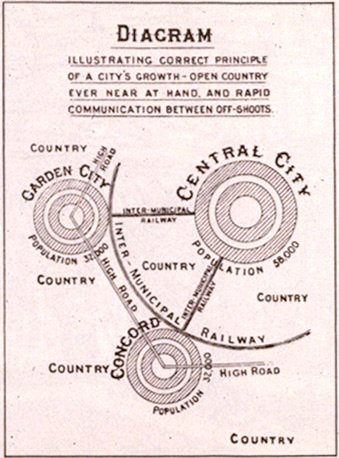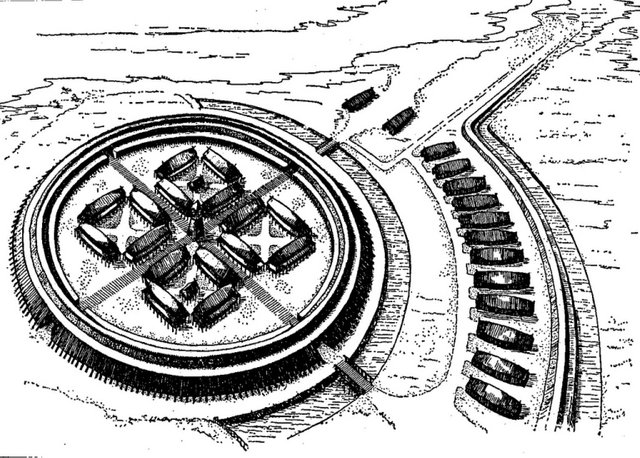Everyday Geography #7 Tracing back common city patterns: radial and circular city pattern
In an earlier post we saw the grid plan as a way of city planning, but this was only one of the common urban planning methods. An other common plan is the radial city.
Introduction
The circular and radial concentric city plan traces back to the early days of humankind. This structure provided a city center and induced a sense of unity. It was also very useful as it formed an efficient defense against dangers from any direction. Therefore we find it in remnants of primitive societies or in a society where a central function prevailed such as the church, trade, industry etc.
Choosing the radial city pattern, whether or not consciously, offered benefits such as:
- Possibility of spreading in all directions
- Well accessible center for markets, industry, church etc.
- practical to defend from intruders
Image source A reconstruction of a Viking settlement in Denmark 1000AD
Planning of medieval towns
Early medieval towns were dominated by the church or the monastery and castles of lords. Towns were sited in irregular terrains for protective measures. Church plaza's became city centers and functioned as market places. Roads generally radiated from this plaza towards the towns borders and gates and concentric streets connected these radial streets. Often city patterns were consciously kept complicated to confuse enemies that were unfamiliar with the town.
Image source: Google earth. -- Moscow city
In cities that flourished and expanded during the medieval period still mainly consist out of this radial city pattern, while further expansions in a later time period might be carried out according to another urban planning method.
19th century garden cities
In the 19th century there was a movement in urban planning called the garden city movement. It was a method of urban planning that was based on radial communities surrounding industrial cities. these gardern cities would be surrounded by greenbelts and agriculture.

A perfect execution of this model was almost never obtained since there always is a remnant of earlier era's and the terrain often forms an obstacle in the execution. Nevertheless were many new cities constructed with this ideal, mainly in the United Kingdom, North America and Europe.
Conclusion
The radial city pattern is rather rare compared to grid or organic planning methods but is still commonly present. It manifested due to a central function that was present in the city and required great accessibility for a lot op people. Do you live near a radially organized city? I would love to hear about it!
Sources
https://www.aboutcivil.org/road-patterns-types-importance.html
https://munsonscity.com/tag/radial-grid/
https://www.scribd.com/doc/154898464/1-Linear-Radial-and-Grid-Iron-Layout-Patterns
https://www.slideshare.net/joshiswapnil853/road-types-and-road-networks
Everyday Geography: previous posts
Everyday Geography #6 Tracing back common city patterns: Grid plan
Everyday Geography #5 Recognize your weather pattern
Everyday Geography #4 Why some dry soils crack
Everyday Geography #3 What makes salt tolerating vegetation special
Everyday Geography #2 Meandering, braided and straight rivers

@OriginalWorks